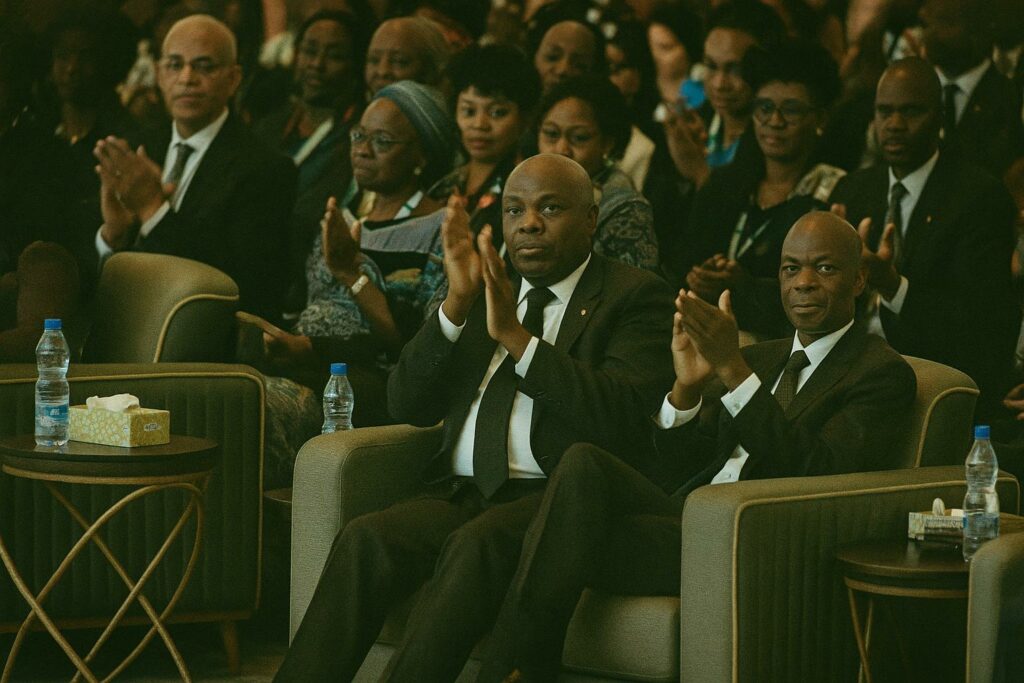Abuja as an Arena of Continental Ambitions
The stately silhouette of the Abuja International Conference Centre offered an apt theatre for Afreximbank’s thirty-second Annual Meetings, an event that has evolved into a de facto summit on the political economy of the continent. Over six thousand delegates filed past meticulous security cordons, among them five heads of state, twenty-three trade ministers and an eclectic retinue of financiers, policy wonks and journalists. Nigeria’s President Bola Tinubu, opening the proceedings, declared that “Abuja must be remembered as the place where Africa moved from declarations to delivery,” a flourish that captured both the soaring ambition and the latent frustration surrounding regional economic integration.
From Balance Sheets to Supply Chains
Founded in 1993 with a mandate to lubricate intra-African commerce, Afreximbank now boasts a balance sheet of 37 billion dollars, a figure the institution’s President, Professor Benedict Oramah, insists is “still modest relative to a continent of 1.4 billion people.” Yet recent headwinds are palpable. Elevated sovereign spreads have lifted the Bank’s own funding costs, while a strong US dollar continues to suck liquidity from frontier markets. Oramah defended the Bank’s decision to expand its emergency Pandemic Trade Impact Mitigation Facility, noting that the instrument “prevented supply-chain seizures in twenty-one member states” during 2023-2024. Critics, including some within the African Development Bank, argue that short-term liquidity lines risk crowding out longer-horizon development lending, an assertion the Afreximbank leadership rejects as “false dichotomy.”
The AfCFTA Imperative under Scrutiny
Hovering over every panel discussion was the unfinished architecture of the African Continental Free Trade Area. While forty-seven countries have ratified the accord, the World Bank estimates that non-tariff barriers still add an average of 283 hours to cross-border formalities for merchandise (World Bank, 2024). Ghana’s Trade Minister, Kobina Tahir Hammond, reminded delegates that “rule-of-origin protocols mean little if scanners at border posts remain idle for lack of electricity.” The Bank’s own Intra-African Trade Fair facility, scheduled for Cairo in late 2025, was advertised not merely as a marketplace but as a stress test of AfCFTA logistics in real time.
Funding the Green and Digital Transitions
Climate finance, no longer a niche sidebar, dominated the afternoon plenary. Afreximbank unveiled a five-billion-dollar Green Transition Bridge Facility designed to underwrite renewable-energy imports and local manufacture of solar components. The African Union’s Commissioner for Energy and Infrastructure, Dr. Amani Abou-Zeid, welcomed the initiative yet cautioned that “Africa must avoid substituting one dependency—hydrocarbons—for another in photovoltaic supply chains,” an allusion to the continent’s heavy reliance on Asian panel manufacturers. Parallel conversations on digital trade corridors highlighted the Bank’s Pan-African Payment and Settlement System, now operational in twelve monetary zones and processing test transactions in local currencies. According to UNECA projections, a fully scaled platform could shave three to five billion dollars annually from correspondent banking fees (UNECA, 2025).
Debt Distress and the Quest for Credit Enhancement
Notwithstanding the upbeat branding, private-sector lenders in Abuja whispered about mounting repayment pressures in at least eight member states that had tapped Afreximbank credit lines during the pandemic. Mozambique’s Finance Minister Ernesto Max Tonela conceded that his country was negotiating maturity extensions, though he insisted these talks were “pre-emptive rather than reactive.” To reassure markets, the Bank publicised a forthcoming Risk Participation Agreement with Japan’s JBIC, aimed at leveraging G7 capital without recourse to sovereign guarantees. Moody’s, in a note circulated on the side-lines, argued that such structures could “ring-fence viable projects from broader sovereign distress,” though the agency maintained its Baa1 outlook on the supranational.
Diplomatic Reverberations beyond the Conference Hall
Afreximbank’s Assemblies have always been as much about soft power as about spreadsheets, and Abuja was no exception. The presence of Egypt’s billionaire industrialist Naguib Sawiris next to Kenya’s Cabinet Secretary for Investments, Rebecca Miano, suggested renewed appetite for cross-border equity play. Meanwhile, EU Commissioner Jutta Urpilainen attended discreet bilateral meetings, signalling Brussels’s intent to align its Global Gateway initiative with Afreximbank pipelines. Chinese representatives from the Export-Import Bank of China maintained a lower profile than in previous years, yet their private suite at the Transcorp Hilton remained a magnet for ministers seeking alternatives to Paris Club orthodoxy. The diplomatic choreography underscored Africa’s widening menu of financing partners, even as concerns over debt sustainability prompted sober corridor conversations.
Signals for Policymakers and Investors
By the meeting’s close, delegates had endorsed an Abuja Declaration calling for expedited customs digitalisation and the establishment of an African Trade Insurance Pool within eighteen months. Whether such timelines prove aspirational or actionable will depend on parliaments across the continent, investor sentiment, and the temperament of markets that have lately punished policy slippage. Yet the palpable sense of urgency, amplified by the next day’s oil-price spike and the region’s fast-rising youth cohort, lent gravity to Professor Oramah’s final observation: “Integration is no longer a theoretical construct; it is a demographic necessity.” His remark, met with sustained applause, encapsulated the delicate balance between rhetorical exuberance and the sobering arithmetic that framed the week in Abuja.

